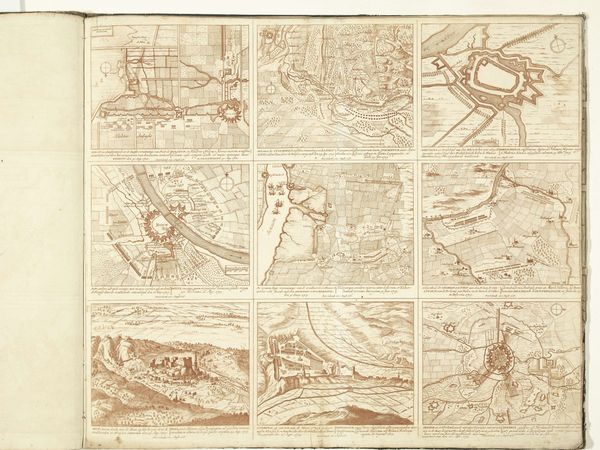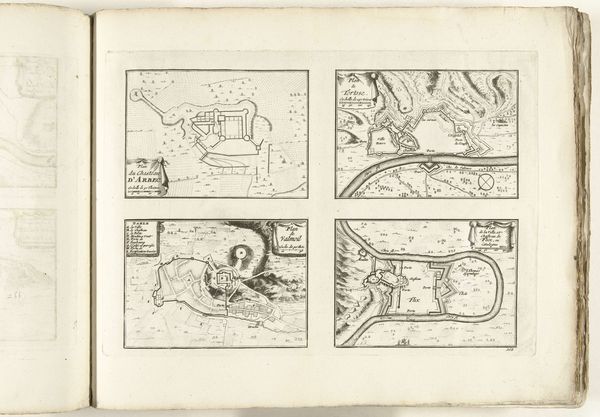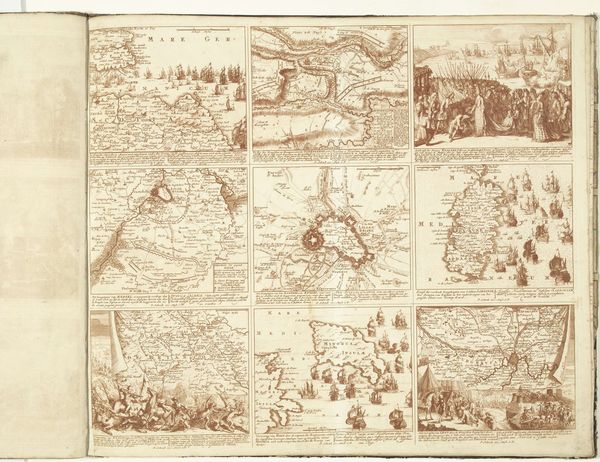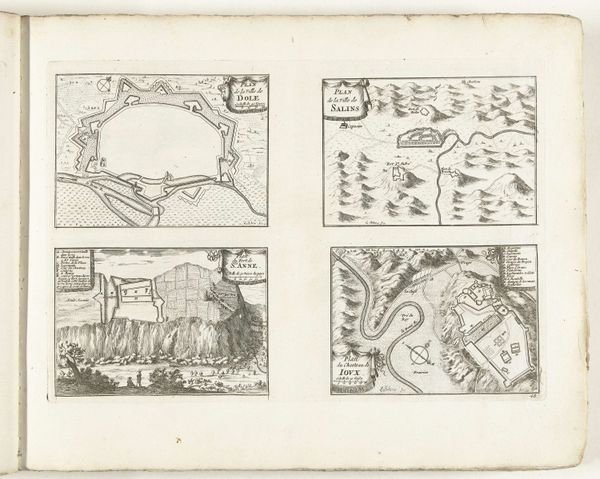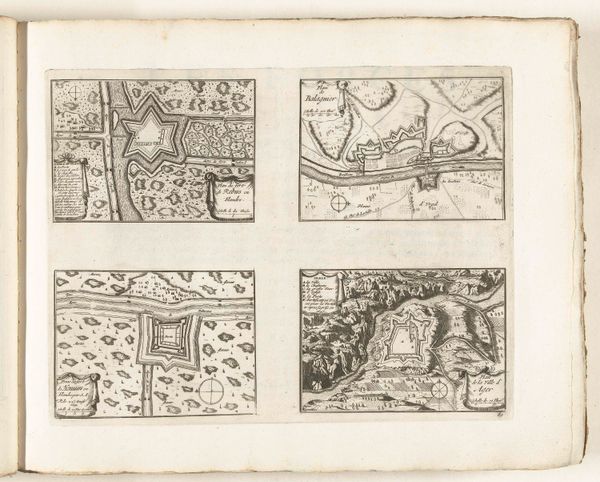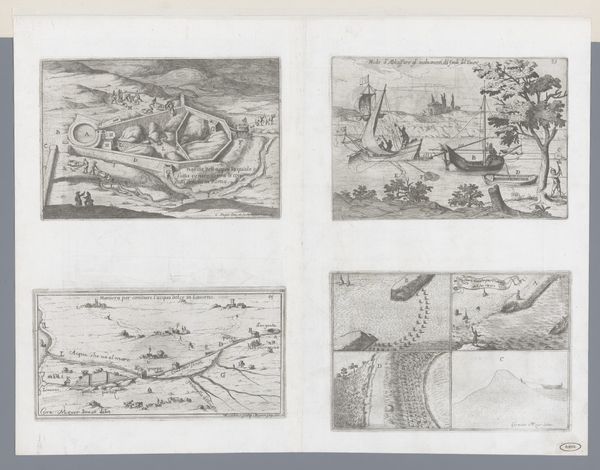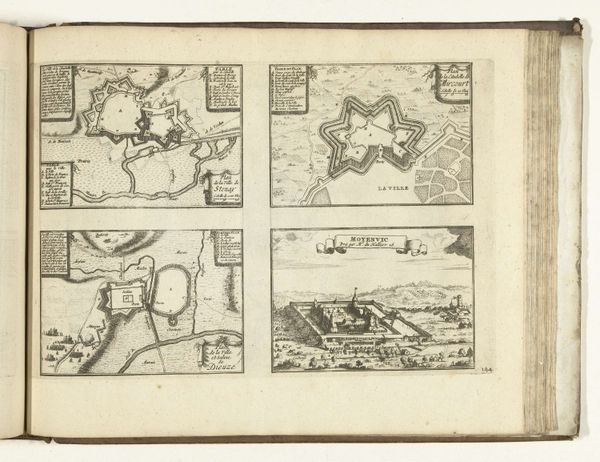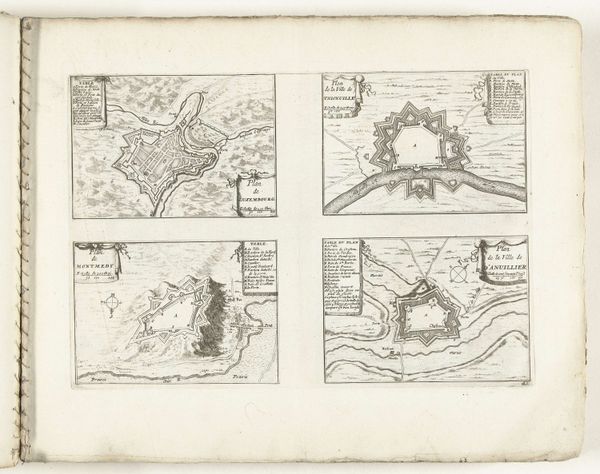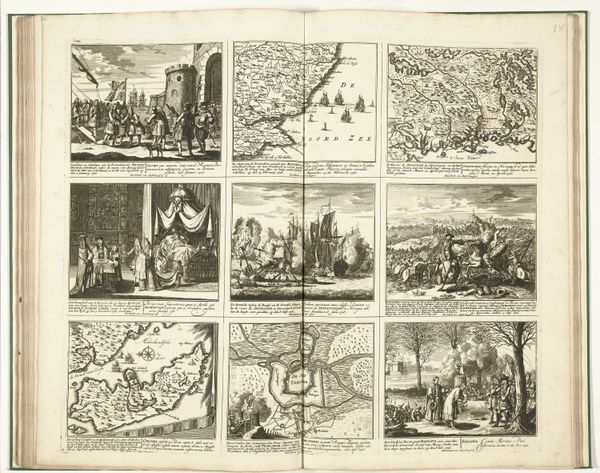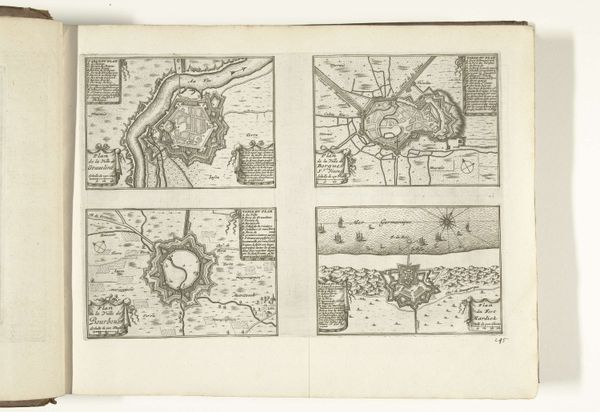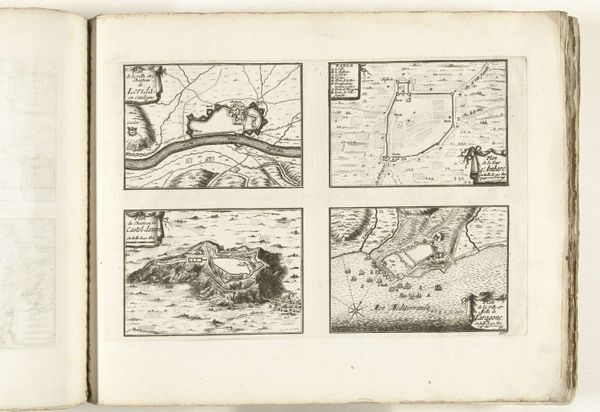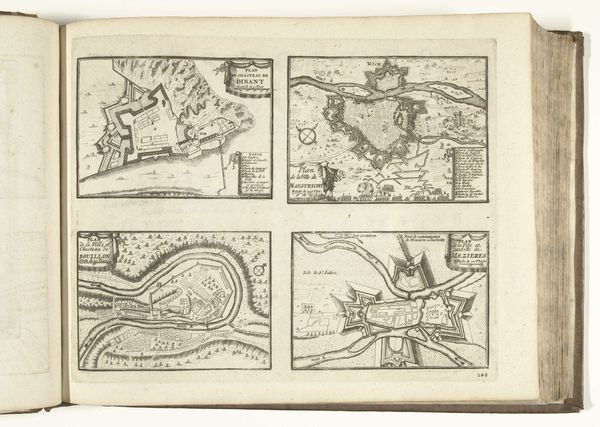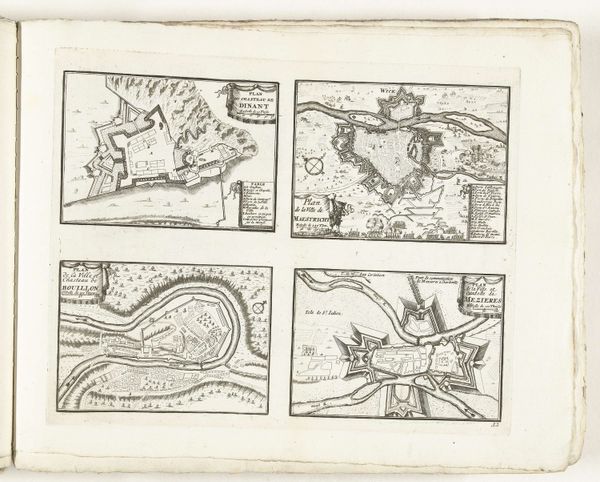
print, engraving
#
baroque
# print
#
pen sketch
#
landscape
#
ink drawing experimentation
#
cityscape
#
history-painting
#
engraving
Dimensions: height 538 mm, width 635 mm
Copyright: Rijks Museum: Open Domain
Editor: So, this is Pieter Schenk's "Schouwburg van den oorlog (blad XVIII)," likely from between 1717 and 1722. It’s an engraving showcasing different cityscapes and battles. I’m struck by how neatly war is depicted here – almost like a collection of cartographic exercises. What's your take on it? Curator: It's a fascinating visual document of its time, isn't it? Schenk is presenting us with not just images of war, but also a carefully constructed narrative around Dutch power and influence. Notice how each cityscape and battle scene is accompanied by descriptive text? This print participates in a larger political project – the visual construction of Dutch military prowess. Editor: So, it’s like propaganda in a way? Is it aimed at informing, or more at shaping public perception? Curator: Precisely. Think about the audience for these prints. They're not just passively viewing these images; they’re consuming a carefully curated image of the Netherlands as a dominant force. The layout of the print, the precise lines of the engravings…everything contributes to an image of order, control, and victory. But who gets to write this history, and whose stories are left out? Editor: That's a really interesting point. I was focusing on the detail in each scene, but I didn’t consider how the entire print functions as a statement. Were these images widely circulated? Curator: Absolutely. Prints like these were distributed widely and played a key role in shaping public opinion and national identity. The Baroque style lends itself to this grandiosity, amplifying the sense of power. We see here a reflection of the Dutch Golden Age and its ambitions. What I wonder, however, is how someone at the time felt when they considered a specific personal event, in light of such generalized portrayals of warfare? Editor: So much to unpack! I'm definitely going to look at other historical prints with a different eye now, thinking about the power dynamics at play. Thanks for this insight. Curator: My pleasure. It's in understanding these power dynamics that we can begin to truly appreciate the public role art plays in shaping history.
Comments
No comments
Be the first to comment and join the conversation on the ultimate creative platform.
